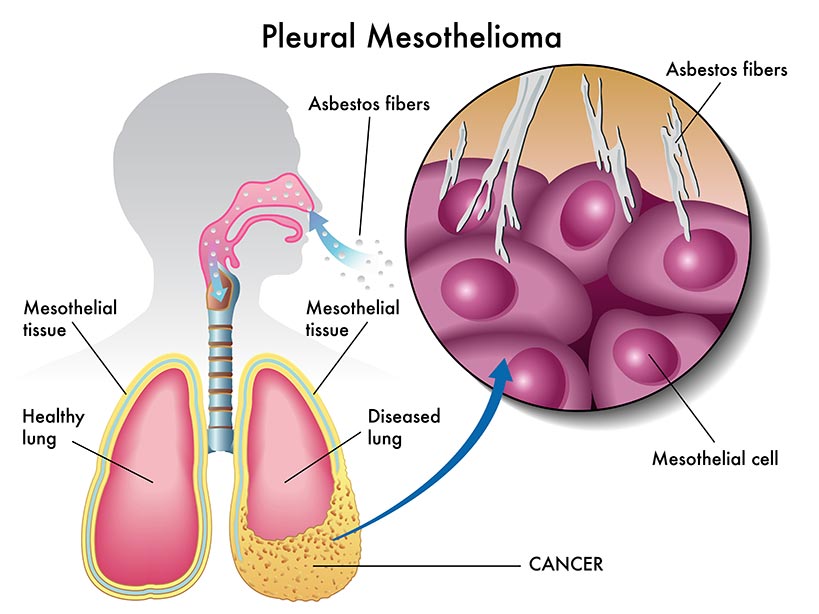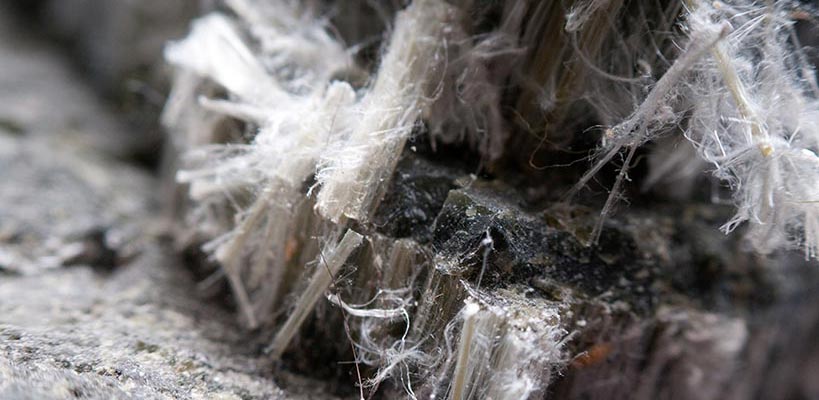What is Asbestos?
Asbestos is a term used to refer to six naturally occurring silicate minerals which grow as veins within mesomorphic rock.
These veins are composed of long and thin crystals made up of various fibres. Each of these fibres contain many microscopic ‘fibrils’ which, if disturbed, can release into the atmosphere and cause a number of asbestos-related health problems to develop.
Types of asbestos
Prior to its dangers being known about, asbestos was often used in buildings for insulation, flooring and roofing. Most of the commercial forms of asbestos are identified by their colour. These include:
- Chrysotile – also known as white
- Amosite – also known as brown
- Crocidolite – also known as blue
However, there are another three types of asbestos which, despite not being used commercially, still pose a threat to human health. These are:
- Anthophyllite – often found in a grey, dull green or white colour.
- Tremolite – often found in a brown, white, green, grey or transparent colour.
- Actinolite – also found in a brown, white, green, grey or transparent colour.
Uses of asbestos
Asbestos was originally used for its versatility and mechanical properties; it is chemical, heat and electrical resistant. It is also highly chemically inert and, because of this, was frequently used as a material for external building work-related products, such as roof tiles, roof ridges, rainwater products and external panels.
It was also used as both an additive and primary material in a number of building applications. Typical material uses included:
- Asbestos insulation board (ceiling tiles, partitions, soffits, transoms etc.)
These can be made up of 85% asbestos and, being semi-compressed, can enable easy fibre release. These should only be removed/worked on by a licensed asbestos removal contractor.
- Asbestos cements (roof sheets, flue pipes, guttering, roof tiles etc.)
These usually only contained 10–15% white asbestos although, if used pre-1955, the asbestos was likely to be crocidolite.
- Lagging on pipes and calorifiers.
These typically contained around 15% asbestos and should only be removed/worked on by licensed asbestos contractors.
- Asbestos reinforced composites (floor tiles, stair nosings, sink pads, toilets seats and cisterns.) The bitumen adhesives on floor finishes can contain asbestos. These are typically low risk materials.
- Asbestos rope and cloth.
Fire blankets, gaskets, cable insulation and flash guards can contain asbestos woven textiles. Fibre release can be seen depending on the type of material. These typically included woven chrysotile (white) asbestos fibres.
- Sprayed coatings.
Sprayed coatings are a licensed material, and have a high fibre release if disturbed. They contain up to 85% asbestos and are commonly found mixed with an adhesive, sprayed on to structural steel columns, beams and purlins.
Dealing with asbestos
Asbestos is only dangerous if it is disturbed and the microfibres it contains are able to become airborne. It can be difficult to identify whether it has been disturbed or not though, so you should always consult an expert if you aren’t sure.
Since asbestos was used in a number of building materials prior to its ban in 2000, there is a high likelihood that it will be in your house. As mentioned, if the asbestos is concealed, it’s fine. However, if you come across any asbestos in your home, building, office, wherever, you should make sure to talk to a professional.
Have questions about Asbestos? Visit our FAQ page to find out more or get in touch with the experts! Our dedicated team here at Crucial Environmental are always on hand to help and are equipped with the training and expertise to deal with asbestos safely and efficiently. Get in touch with us today by calling 01903 297818 if you live in the South of England or 01623 711080 if you live in the North of England.
Dangers of asbestos
When materials containing asbestos become disturbed or damaged, they release microscopic fibres into the air. Once these fibres have become airborne, people working around the area can then inhale the particles into their lungs.
This initial exposure to asbestos doesn’t result in danger straight away but, over time, can lead to a number of significant health risks. In essence, the longer somebody is exposed to asbestos, the more likely it is for these harmful fibres to accumulate in their lungs.
However, due to the long time period it takes for asbestos-related disorders to progress, it is difficult to know if you have been affected before the disorder has already developed. Here are the main conditions that long-term asbestos exposure can cause:
- A fatal cancerous condition that develops almost exclusively because of asbestos exposure.
- A condition characterised by shortness of breath caused as a result of asbestos fibres scarring the lungs.
- Pleural thickening. A condition which affects the lung’s lining (pleura), causing a shortness of breath and an intense feeling of chest discomfort.
- Asbestos-related lung cancer. A condition characterised by the development of a tumour in the lung, brought on as a direct result of asbestos exposure.
You can find out more about the science behind asbestos by clicking here.


